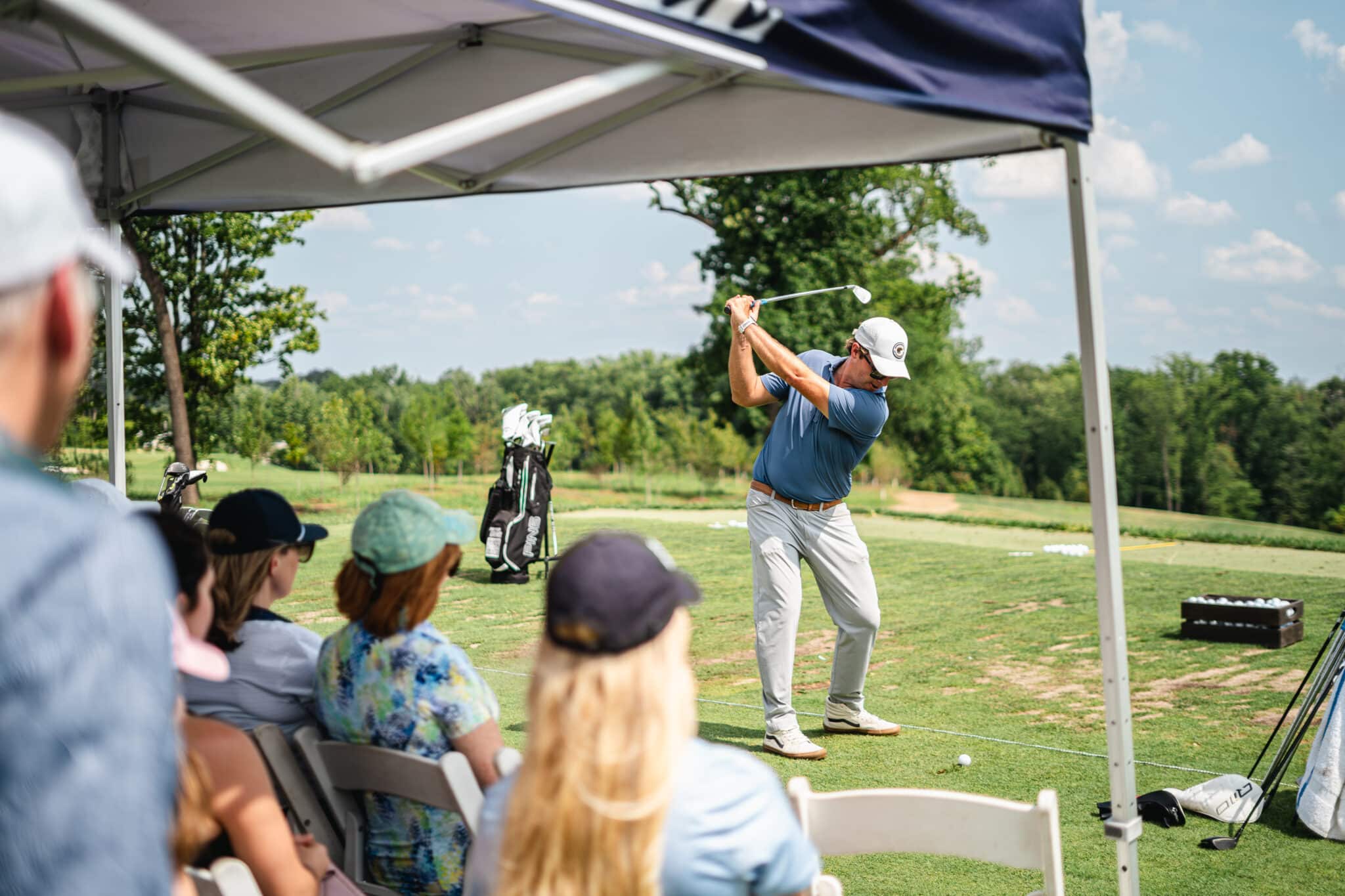By Vinnie Manginelli, PGA
 Jamie Hoke grew up playing travel baseball but lacked the stature that today’s high-level ball player generally needs to excel. As an 8th grader, Hoke switched his focus to golf, learning the game from his dad at Makefield Highlands Golf Club, a public course in Yardley, Pennsylvania.
Jamie Hoke grew up playing travel baseball but lacked the stature that today’s high-level ball player generally needs to excel. As an 8th grader, Hoke switched his focus to golf, learning the game from his dad at Makefield Highlands Golf Club, a public course in Yardley, Pennsylvania.
“I fell in love with the game and would ride my bike to the course to practice on my own,” he recalls. “With just a wedge and putter and a backpack full of balls, I would chip and putt for hours playing different games to practice. Most of my time spent on the course was at 6:00 am for the early bird special with my dad before he went to work. It was during those morning rounds when I started to think about making golf my career.”
After playing in high school Hoke went to Penn State University to study Professional Golf Management. He says he wasn’t a great golfer going into college, typically shooting in the low 80s, but over his four years at Penn State, his game improved every season, and he would qualify for the Jones Cup to represent PSU.
“After college, I set out to become a head professional and started to climb my way up in the industry,” he explains. “While working for David Reasoner at Ridgewood Country Club in New Jersey, I decided to alter my career path to focus on teaching. Learning from some of the best instructors, including Sean Foley, Megan Padua Buzza, Steve Buzza, Jason Sutton, Michael Robinson and Andy Miller, I dedicated my career to helping golfers improve. In 2022, with the help of my mentor Matt Walbert, I became a PGA of America Teaching Professional at Union League Golf Club at Torresdale.”
Among his many coaching successes, Hoke is particularly proud of two very popular programs at Union League. He uses Legends of the Links trading cards in his junior programming. These trading cards, that he designed and created, have golf skill challenges on them that kids can use to practice on their own. The program allows kids to collect cards during classes by completing corresponding skill challenges, and once they collect enough cards they can battle each other with them. Hoke says this has brought a lot of excitement to the program and gets kids excited to attend class week after week to see what cards they can collect next.
“The other program that we launched last year and are building on this year is called Golf Journeys,” Hoke tells us. “I took all the data I could find that related to how different handicap levels compare in a variety of golf skills, such as proximity to the pin from various yardages, one-putt percentage from different distances and average driver carry. Using this data, I created a full game assessment that I can put players through in an hour to see how the different skills compare to various handicap levels. A golfer who might be a 15 handicap player can go through the assessment and understand that they are a 12 handicap driving, an 18 handicap in approach, a 16 handicap in short game and a 14 handicap in putting. Using this assessment, the players and I have a fantastic roadmap to follow to achieve their playing goals. As they move along their journey, we give each player a practice field journal that has different practice games that they can play. Each journal has a score sheet so they can track their improvement in the various games which will help improve the specific parts of the assessment.
When asked what he sees coming down the pike, Hoke, a 2024 Golf Range Association of America (GRAA) Top 100 Growth of the Game Teaching Professional, had this to say about trends, technology and teaching, “I think the next big trend in golf instruction is going to be focused on skill development over technical development. The technology that we have at our fingertips is incredible, and with that, our insights into the golf swing have become more and more profound. However, I have had far more success improving players by developing their skill with the swing they currently have rather than trying to create the perfect golf swing. I think players and coaches see that chasing the perfect numbers often ends up spending hours and hours practicing without seeing results that are worth the time. Range ball-tracking technology has made practice far more appealing with their gamification tools, and I am trying to continue that trend by using the trading cards and field journals with my players. I see golf instructors starting to focus on improving how a player plays golf more than how they swing the club.”
For more information on Legends of the Links cards, log on to Hoke’s website today, and see how you can Bring New Golfers to the Range!













